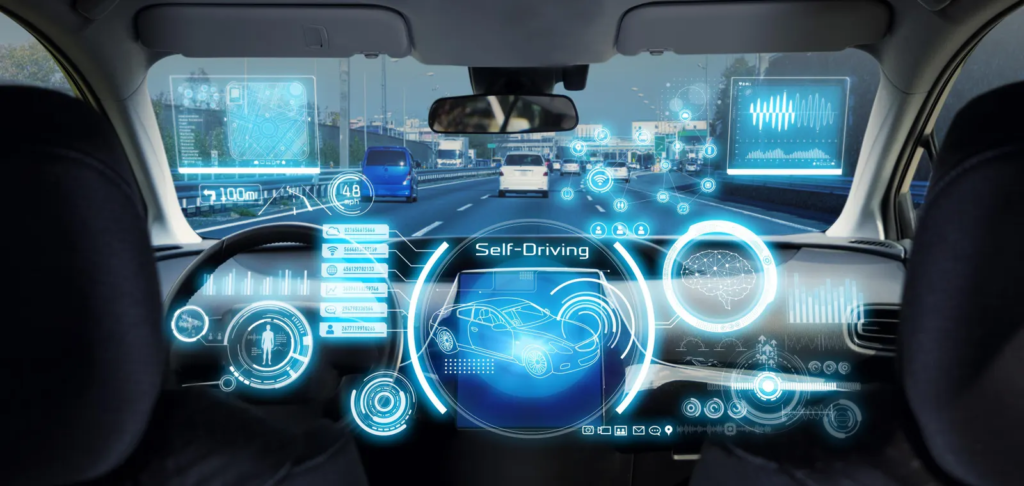Today, many automakers are excited about launching their self-driving cars in the market. The number of autonomous vehicles will increase in the coming years. Artificial Intelligence and Machine Learning are the common technologies used for these autonomous cars. These vehicles drive and navigate the highway without human interaction. However, how do self-driving cars learn to drive? Data is highly significant for innovatively designed autonomous cars. Let us talk more about the data for self-driving vehicles.

What is training data for autonomous cars?
Training data refers to a particular set of data used for training an ML model. Using the data, the model learns the way to make predictions. Autonomous cars also use the training data to learn new things. Every training model comprises a series of input values and the corresponding output values.
The car analyzes the training data and understands the connection between the output labels and input features. Modern autonomous cars learn differently from the data provided to the systems. If engineers have provided no data, the model will not learn anything. But, the data quality is a significant factor for your autonomous cars.
Why do AVs need data?
Autonomous cars cannot perform efficiently without accurate and relevant data. To ensure higher quality data, experts should collect it from various sources. The data resents the real-world scenarios, and there is no bias.
Comprehensive data enables vehicles to navigate various situations. The vehicle should learn the way to manage different scenarios on the highway. So, it is essential to feed diverse data, which represents diverse-
- Weather
- Traffic patterns
- Terrains
Another reason for providing data is to let the self-driving car learn about particular rules. The data may be related to a certain area where the car will be driven. The autonomous model will leverage the data to learn the regulations.
Factors to consider while collecting data for self-driving vehicles
Feeding an autonomous vehicle with data is not a one-time activity. It needs continuous refinement to get the best result. A fully autonomous car is safer than standard driverless vehicles that depend on some human interventions. But, the integrated system of the autonomous models is trained on data. The most vital aspects of data are-
Diversity and data volume- If the ML model is trained on a vast dataset, it leads to a highly reliable system. A data collection strategy is essential to ensure that the dataset is valuable and accurate. Real-world experiences will also be relevant to it.
For instance, an autonomous car must anticipate real-world scenarios like a pedestrian crossing over the road. Although data annotation is highly useful, acquiring diverse, high-volume data is vital.
Highly accurate data annotation
Data must be accurate and clean while training deep learning and ML models. Autonomous cars have become highly reliable due to data accuracy. With strong data annotation techniques, you can improve the ML model’s accuracy.
It is essential to find the gaps in the data flow and update data labeling. Good tactics are also important for addressing real-world scenarios. Refine the benchmarks and the model to represent the training goals. Moreover, partnerships with data training experts will help with better data annotation techniques.
Technologies for collecting data for self-driving cars
In the world of autonomous driving, data is needed to train self-driving vehicles. The car learns the way to navigate traffic and roads. Sensor fusion is a process for gathering data. It means data is combined and derived from different sensors like radar and cameras. It helps in creating a clear image of the vehicle’s surroundings.
So, find the list of technologies effective for data collection for AVs.
- Camera– A camera is used for self-driving cars’ data training purposes. It snaps pictures of different objects because images are essential to train the car. From infrared to traditional cameras, almost any model can accomplish this task. Pictures need the right labeling and classification for further analysis.
- Radar– Modern radar technology plays a significant role in automotive data training. It involves using radio waves for object identification and measurement of distance. Radio waves also provide information related to the target object. They allow you to track stationary and moving objects.
- Light Detection and Ranging– LiDAR is a sensor with remote sensing capability using laser pulses for distance measurement. The data is useful for 3D map creation for the surveyed area. The sensor is also effective for identifying the shape and distance of a particular object. The collected information helps with 3D model creation for certain areas. LiDAR has several applications like measuring the tree’s height and mapping the Earth’s surface.
Data fed to automotive vehicles is used in various ways–
The self-driving vehicles use the data in a range of ways-
- Tracking and detecting objects– Some data annotation techniques annotate cars, traffic signals, and travelers. It allows AVs to identify everything accurately.
- Recognizing the number plates in the vehicle– Image annotation is the main technique for easy detection of number plates. The technology extracts the plates from the vehicle’s image.
- Track pedestrians– The integrated systems will track every moment of pedestrians.
- Differentiate lanes– Self-driving vehicle development depends on lane differentiation technique. The cars can differentiate sidewalks from streets.
- In-cabin monitoring– It is another use case of the data in the world of autonomous vehicles. It makes the passengers feel safe during the ride. The cabin has a built-in camera to gather driver details like drowsiness and distraction. The in-cabin images need accurate annotation and are useful for training the ML models.
Conclusion
Using high-quality, accurate data for self-driving vehicles is highly beneficial. Data allows the AVs to gain a better understanding of the environment. It also helps the vehicle make the right driving decisions to make your journey safer. You can avoid the chance of accidents. Moreover, data improves AV’s performance and makes the car more reliable and efficient.



